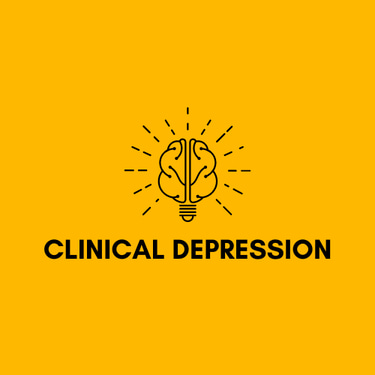For Questions: Text (833)233-0869
Telehealth Depression Disorder Treatment: A Comprehensive Guide


In today's fast-paced world, mental health has become a significant concern for many individuals. Depression, a common but serious mental health disorder, affects millions of people globally. Traditional face-to-face therapy has been the cornerstone of treatment for many years. However, with the advent of technology and the rise of telehealth services, depression disorder treatment has become more accessible, convenient, and efficient. This article will delve into the benefits, challenges, and effectiveness of telehealth depression disorder treatment, and how it is shaping the future of mental health care.
Understanding Depression
Before exploring telehealth options, it is essential to understand what depression is and how it impacts individuals. Depression is more than just feeling sad or going through a rough patch. It is a severe mental health condition that affects how a person feels, thinks, and handles daily activities. Symptoms of depression include:
Persistent sadness or anxiety
Loss of interest in activities once enjoyed
Changes in appetite and weight
Trouble sleeping or sleeping too much
Fatigue or lack of energy
Difficulty concentrating, remembering, or making decisions
Feelings of hopelessness or pessimism
Thoughts of death or suicide
Depression can be triggered by various factors, including genetics, brain chemistry, trauma, and life circumstances. It is a complex disorder that requires a comprehensive treatment approach.
The Rise of Telehealth in Mental Health Care
Telehealth, also known as telemedicine, refers to the use of digital technology to deliver health care services remotely. This can include video consultations, phone calls, text messaging, and mobile apps. Telehealth has been gaining popularity in recent years, particularly in the field of mental health care. The COVID-19 pandemic accelerated its adoption as many health care providers shifted to remote services to continue providing care while maintaining social distancing.
The benefits of telehealth are numerous, especially when it comes to treating depression:
Accessibility: Telehealth breaks down barriers to care by making mental health services accessible to individuals in remote or underserved areas. It allows patients to receive care from the comfort of their homes, eliminating the need for travel.
Convenience: Telehealth appointments can be scheduled at a time that is convenient for the patient, reducing the need for time off work or rearranging personal commitments.
Anonymity: Some individuals may feel more comfortable discussing their mental health issues in a virtual setting rather than face-to-face. This can reduce the stigma associated with seeking treatment for depression.
Continuity of Care: Telehealth allows for consistent follow-up and monitoring, which is crucial in managing chronic conditions like depression. Patients can have regular check-ins with their therapists or psychiatrists without the hassle of in-person visits.
Cost-Effectiveness: Telehealth can reduce the overall cost of treatment by eliminating travel expenses and allowing for shorter, more frequent check-ins, which can be less expensive than traditional therapy sessions.
How Telehealth Depression Disorder Treatment Works
Telehealth depression disorder treatment typically involves a combination of psychotherapy (talk therapy) and medication management, similar to traditional in-person treatment. The following are the main components of telehealth treatment for depression:
Initial Assessment: The first step in telehealth depression treatment is a comprehensive assessment conducted by a licensed mental health professional. This assessment may involve a video consultation where the therapist or psychiatrist gathers information about the patient’s symptoms, medical history, and personal circumstances. The goal is to develop a tailored treatment plan.
Therapy Sessions: Psychotherapy is a critical component of depression treatment. Through telehealth, patients can engage in various forms of therapy, including cognitive-behavioral therapy (CBT), interpersonal therapy (IPT), and dialectical behavior therapy (DBT). These sessions are conducted via video conferencing platforms, where the therapist and patient can interact in real-time.
Medication Management: For some individuals, medication may be necessary to manage depression symptoms. Psychiatrists can prescribe medication through telehealth services and monitor the patient’s response to treatment. Regular virtual check-ins ensure that the medication is working effectively and that any side effects are managed.
Supportive Tools: Many telehealth platforms offer additional resources such as mobile apps, online support groups, and self-help materials. These tools can complement therapy and medication, providing patients with additional support between sessions.
Crisis Intervention: Telehealth services often include options for immediate support in case of a mental health crisis. This can be crucial for individuals at risk of suicide or severe depressive episodes.
Effectiveness of Telehealth in Treating Depression
Numerous studies have demonstrated the effectiveness of telehealth in treating depression. Research shows that telehealth treatment outcomes are comparable to those of in-person care. Patients receiving telehealth depression treatment report high levels of satisfaction and adherence to treatment plans.
One study published in the Journal of Affective Disorders found that telehealth-delivered CBT was as effective as face-to-face CBT in reducing depressive symptoms. Another study in the Journal of Medical Internet Research highlighted that telehealth interventions led to significant improvements in depression and anxiety symptoms, with many participants reporting a preference for telehealth over traditional in-person therapy.
Telehealth also allows for more flexible and personalized care. For example, patients can access therapy sessions from a location where they feel most comfortable, whether that’s at home, in a private office, or even while traveling. This flexibility can enhance the therapeutic relationship and lead to better treatment outcomes.
Challenges and Limitations of Telehealth for Depression Treatment
While telehealth offers many advantages, it is not without its challenges. Some of the limitations of telehealth for depression treatment include:
Technology Barriers: Not all patients have access to the necessary technology, such as a reliable internet connection, a computer, or a smartphone. Technical issues during sessions can also disrupt the therapeutic process.
Privacy Concerns: Patients may be concerned about the confidentiality of their sessions, particularly if they share a living space with others. Finding a private and quiet space for telehealth sessions can be challenging.
Limited Nonverbal Communication: In-person therapy allows therapists to observe nonverbal cues such as body language and facial expressions, which are essential in understanding a patient’s emotional state. Telehealth can limit the ability to pick up on these cues, although video conferencing still provides some level of nonverbal communication.
Insurance Coverage: While telehealth services have expanded, not all insurance plans cover telehealth for mental health services, and coverage can vary by state and provider.
Patient-Provider Connection: Some individuals may find it difficult to establish a strong therapeutic alliance with their provider through a screen. The lack of physical presence can make it harder for some patients to open up or feel fully connected during sessions.
Who Can Benefit from Telehealth Depression Disorder Treatment?
Telehealth depression disorder treatment is suitable for a wide range of individuals, including:
Individuals with Mobility Issues: For those with physical disabilities or chronic illnesses that make it challenging to attend in-person appointments, telehealth offers a convenient alternative.
Residents of Rural Areas: People living in rural or remote areas often have limited access to mental health care providers. Telehealth bridges this gap by connecting them with qualified professionals.
Busy Professionals: Individuals with demanding work schedules may find it difficult to attend regular in-person therapy sessions. Telehealth offers flexibility in scheduling, making it easier to fit therapy into a busy life.
Parents and Caregivers: Those responsible for caring for children or elderly relatives may struggle to find time for their own mental health care. Telehealth allows them to receive treatment without leaving their responsibilities.
Students: College and university students often face unique stressors that can lead to depression. Telehealth can provide accessible support, especially for those living away from home.
The Future of Telehealth in Depression Treatment
The telehealth revolution is likely here to stay, even as the world recovers from the COVID-19 pandemic. The convenience, accessibility, and effectiveness of telehealth have proven to be a game-changer in mental health care. As technology continues to advance, we can expect telehealth services to become even more integrated into the standard treatment for depression.
Future innovations may include enhanced virtual reality therapy sessions, AI-powered mental health apps, and more sophisticated telehealth platforms that offer a seamless experience for both patients and providers.
Conclusion
Telehealth depression disorder treatment represents a significant advancement in the way mental health care is delivered. It offers a flexible, accessible, and effective option for individuals struggling with depression, especially those who face barriers to traditional in-person care. While challenges exist, the benefits of telehealth far outweigh the drawbacks for many patients.
As telehealth continues to evolve, it will undoubtedly play a crucial role in the future of mental health care, making treatment more accessible and reducing the stigma associated with seeking help. If you or someone you know is struggling with depression, exploring telehealth options could be the first step towards recovery and improved mental well-being.
©2025
Clinical Depression
For Questions: Text
(833) 233-0869
